






Hunger In Southwest Texas
1 in 5 adults are food insecure
1 in 4 children are food insecure









1 in 5 adults are food insecure
1 in 4 children are food insecure

Founded in 1980, the San Antonio Food Bank takes pride in fighting hunger and feeding hope across our 29 county service territory. We have grown to serve 100,000 individuals a week in one of the largest service areas in Texas.
Through your gifts of Food, Time, Money, and Voice, we can help feed hope to neighbors facing hunger in our community. Give help at safoodbank.org
Food donations are critical to our ongoing mission of collecting and redistributing millions of pounds of food to individuals and families across Southwest Texas.
We can turn your $1 donation into 7 meals or 10 pounds of food. Make a gift by scanning the QR code with your phone.

Our volunteer opportunities range from our sorting room, warehouse, community kitchen, distributions, and more. All ages and abilities welcome.
We believe the voice of the community is powerful. Advocate against hunger or share our mission with your network. Connect with us @safoodbank.
Dr. Bradberry is an award-winning author whose bestselling books have sold more than 3 million copies in 150 countries. Dr. Bradberry has been covered by, Newsweek, Time, BusinessWeek, Fortune, Fast Company, USA Today, The Wall Street Journal, The Washington Post, and The Harvard








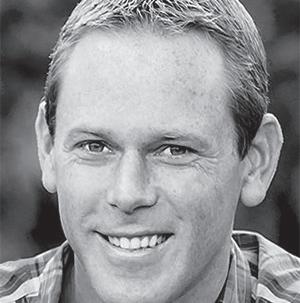
Sonny Melendrez is an award-winning motivational speaker, Hall of Fame radio/ TV host and author, based in San Antonio. For more of his enthusiastic brand of inspiration and speaking information, visit his official site: SonnyMelendrez.com or email: Sonny@SonnyMelendrez.com Listen to his inspirational podcast -The Sonny Melendrez Show wherever you access your podcasts.





We are thrilled to bring you our second issue of MultifamilyMagazines.com, San Antonio! In this issue, we have some amazing articles from top leaders who inspire us and share their expertise. Dr. Travis Bradberry, best selling author, shares an article on how successful people make smart decisions and multifamily expert, Brent Williams, shares his insights on how to improve your own skills by empowering others. Chelsea Kneeland, VP at J. Turner Research, shares the importance of rest for leaders and teams, Sonny Melendrez encourages us to keep dreaming and Jordan Brooks shares his insights on the San Antonio market conditions.
We want to extend our sincerest thanks to our sponsors who help make this magazine possible. Without their support, we couldn’t bring you the great content you love each issue. We’re proud to say this is a special publication, chock-full of insightful articles, beautiful photos and interesting interviews. So, grab a cup of coffee, kick back and enjoy the latest edition – we hope you love it as much as we do!
Enjoy!
MultifamilyMagazines is published bi-monthly with the following issue dates:
October/November 2023 - Deadline for submissions, Sept. 1, 2023
December 2023/January 2024 - Deadline for submissions, Nov. 1, 2023
February/March 2024 - Deadline for submissions, January 5, 2024
April/May 2024 - Deadline for submissions, March 1, 2024
June/July 2024 - Deadline for submissions, May 1, 2024
August/September 2024 - Deadline for submissions, July 1, 2024
Copyright© 2023 MultifamilyMagazines.com. All Rights Reserved. All materials, including content and artwork, found in this publication are protected by copyright and other intellectual property laws, and may not be used without authorization. Any use, reproduction, modification, transmission, distribution or republication of any parts of this work is strictly prohibited, unless authorized in writing by publisher. Unauthorized use may violate copyright, trademark and other applicable laws. Contents of this magazine are strictly for informational and entertainment purposes. In no event shall the publisher be liable for any damages such as direct, indirect, punitive, accidental, or consequential, arising out of the application of any of the contents of this magazine. Opinions expressed are those of the writers or sources and do no necessarily represent the views of the publisher nor do they constitute the endodrsement of products or services herein. Information in this publication has been compiled from sources believed to be reliable, however, MultifamilyMagazines.com makes no guarantee as to, and assumes no responsibility for, the correctness of the information and/or recommendations.
Our mission is to provide a dynamic platform for multifamily professionals to connect, share ideas, and feel inspired.MEMBER SAAA, TAA, NAA
 Jordan Brooks Senior Market Analyst
ALN Apartment Data
Jordan Brooks Senior Market Analyst
ALN Apartment Data
Jordan@alndata.com
www.alndata.com
Jordan Brooks is a Senior Market Analyst at ALN Apartment Data. In addition to speaking at affiliates around the country, Jordan writes ALN’s monthly newsletter analyzing various aspects of industry performance and contributes monthly to multiple multifamily publications. He earned a master’s degree from the University of Texas at Dallas in Business Analytics.

After a down year in 2022, Greater San Antonio multifamily faced further challenges to performance in the first half of 2023. Apartment demand continued to be missing in action while new supply ramped up considerably. The situation is one facing numerous markets around the country, and unfortunately, there is little reason to expect a dramatic turnaround in the back half of the year.
All numbers will refer to conventional properties of at least fifty units.
A marked difference from the last couple of years has been the volume of new supply through the first half of 2023. Just more than 3,500 new units were delivered across Greater San Antonio through June, up from less than 1,000 in the same portion of 2022. Deliveries were fairly concentrated with only seven of twenty-five ALN submarkets adding new units in the period. The Far West submarket, an area north of Highway 90 and west of I-410, led the way with around 1,000 new units. The Boerne – Comfort region was also active with more than 600 new units delivered.
Apartment demand has not been as bleak as in the first six months of last year, but the improvement fell well short of keeping pace with new supply. A net loss of around 300 leased units through June was better than last year’s net loss of approximately 1,500 leased units. Also, the second quarter did manage to break into positive territory with net absorption of almost fifty units. Despite some measure of recent improvement, demand has been stubbornly low for a full eighteen months and counting.
The net loss of leased units in 2023 has been a dynamic within the workforce housing segments. Class A and Class B demand has been tepid, but the negative movement has come only within the Class C and Class D subsets. For Class C, around 600 net leased units have been lost in the first half of the year. For Class D, the loss was about 700 net units.
The effect of increased new supply and negative net absorption was a 200-basis point decline in market-level average occupancy in the period to just over 88% by the end of June. This average was a far cry from the 94% average the area brought into 2022, but the bottom is likely not yet in.
cal to that from June of 2019 before the jump in 2020 during the early days of the pandemic. The average incentive value has increased by almost 10% this year, to roughly three weeks off an annual lease.
For the first time since 2020, average effective rent growth disappeared in the first six months of the year. A 0.1% decline left the market average virtually unchanged at $1,260 for a new lease. The loss was entirely due to a 0.3% decline in June. June was also the only month of the second quarter in which net absorption was negative. The softening of market conditions in the month mirrored what was seen nationally and came at a time when seasonal trends generally boost industry performance.
At the price class level, only Class A properties have managed notable rent growth so far this year. Even so, almost a quarter of the 2.7% midyear gain came just in the month of June. The Class B segment has seen the average effective rent remain unchanged, but the bottom two price tiers have experienced declines. For Class C, a decline of just more than 1% brought the average unit to $1,207 for a new lease while a Class D decline of closer to 2% brought the average unit to $1,006 for a new resident.
As would be expected given the environment facing Greater San Antonio multifamily, both lease concession availability and the average discount value have increased so far this year. An increase in availability of almost 50% from the start of the year left about 30% of conventional properties offering an incentive for new leases at the close of June. This level of availability was almost identi-

Greater San Antonio multifamily remains in the midst of a challenging period following the volatility of 2020 and 2021. The demand picture, while leaving much to be desired, has at least improved somewhat from 2022. Unfortunately, the modicum of improvement has come at the expense of rent growth, and the improvement has not been nearly substantial enough to defend market occupancy in the face of new supply pressure.

Looking forward into the back half of the year, there is little reason to expect a substantial turnaround in demand. The affordability issues created by the rent growth of 2021 and 2022 remain, signs of economic softening are beginning to emerge, student loan payments are set to begin in October, and multifamily demand tends to cool off around August or September under normal conditions.
Given the headwinds to demand and the activity of the construction pipeline, the second half of the year may look a lot like the first – at best.
Q. How did you initially become involved in the multifamily industry?
A. Back in 1987, as a college student, I was in search of a job that could provide me with not only a source of income but also a place to live, all in one convenient location. After calling numerous properties, I eventually landed a position as a Leasing Agent at a property that seemed like an ideal fit for me. Little did I know then that this introduction to the multifamily industry would serve as a cornerstone for my future career.
Q. What have been the most rewarding aspects of your leadership role in the multifamily industry?
A. To me, the most rewarding aspect of my leadership role in the multifamily industry is the people I get to work with. I find it extremely gratifying to be able to help people grow and develop within their careers. Being able to empower and invest in those around me, and help them succeed, is truly one of the most fulfilling experiences. I am proud of the many promotions I have given to members of my team and working with them to help them reach their full potential.

Q. How has the multifamily industry changed since you began your career?
A. When I first started my career in the multifamily industry, I thought it would be just a job for me during college. However, over time I’ve seen the industry grow and evolve into a truly viable career path. The overall growth of the industry has been tremendous, with so many different parts and specialties
that simply didn’t exist before. We are no longer limited to just working on-site, but instead there are now a wide variety of departments, job opportunities, and career paths available to those in the industry. During the early 90s, the multifamily industry began changing and transitioning from simple property management to a much more sophisticated, respected profession that offered many opportunities for growth and development. It’s exciting to see how the industry has continued to progress since then, and I’m looking forward to seeing where it goes in the future.
Q. What advice would you offer someone looking to enter the multifamily industry?
A. If you’re considering joining the multifamily industry, my advice would be to fully immerse yourself in the opportunities it presents. It truly is a great industry with a wide range of job opportunities and various avenues for growth, whether on the management or vendor side. The multifamily industry is an exciting, constantly evolving field with plenty of room for growth and development. With a passionate and dedicated mindset and a willingness to learn, there’s no limit to what you can achieve in this industry.
Q. What do you believe are the key components of successful multifamily management?
A. In my experience, key components of successful multifamily management include effective communication, timely property maintenance, prioritizing resident satisfaction, sound financial
management, and compliance with regulations. All these factors create an efficient, secure, and desirable community that provides a positive living experience for residents.
Q. What have been the biggest challenges you have faced in your leadership roles?
A. One major challenge in a leadership position is keeping up with the rapid advancements in technology. In today’s world, technology plays a vital role in various aspects of our industry, whether it’s marketing or maintenance. It’s essential to continuously research and explore new technologies to remain competitive and ensure smooth operations. By embracing a mindset of continuous learning and keeping up with the latest developments, I’m able to leverage technology to improve efficiency and effectiveness in our processes.
Q. What has been the most impactful decision you have made as a leader in the multifamily industry?
A. As a leader in the multifamily industry, one of the most impactful decisions I’ve made was getting involved with the apartment association. This decision introduced me to a network of like-minded professionals in this industry. By attending association events and actively engaging with other professionals, I found the support system I needed to succeed. This network has provided me with a sounding board for ideas and a support system during challenging times.
Q. What measures do you take to ensure your staff stays motivated?
A. To ensure my staff remains motivated, I prioritize performance and consistently recognize their hard work. It is important for me to communicate to my team members that I value and appreciate their contributions to the success of our properties. Given the scope of my portfolio, which includes new constructions across the country, I make it a priority to frequently travel to visit all of my sites. During these visits, I like to take my team members out for a meal and incorporate some fun social activities into our time together. By getting to know them on a personal level, I show my genuine care and interest in them as individuals, not just as employees. This approach motivates my staff, as they feel supported and valued by a leader who truly understands and appreciates them.
Q. What do you believe are the key traits of an effective leader?
A. Actively listening and leading by example are two essential traits for effective leaders. Actively listening allows lead-
ers to understand the needs, concerns, and ideas of their team members, promoting open communication and trust. Similarly, leading by example inspires and motivates others through demonstrating integrity, hard work, and professionalism. This creates a positive tone for the team which encourages employees to give their best effort. Lastly, effective leaders recognize the individuality of their employees. By incorporating a sense of fun and providing a positive, enjoyable workplace culture, leaders create an atmosphere where employees feel valued and engaged.
Q. Who inspires you?
A. I gave this question a great deal of thought. Initially, I never thought that my children would express an interest in our industry. However, Alexandria’s passion for her career has inspired me tremendously over the recent years. Upon completing her studies at Texas State University, she made the transition from a waitressing job to a leasing agent at Greystar. In an impressively short period, she ascended through the ranks, progressing from a leasing agent at a small community, then onto becoming an assistant manager at a midrise, and finally achieving the role of property manager of a new construction.
What inspires me most about Alexandria is her approach to operations, which is characterized by her ability to infuse creativity, innovation, and a commitment to a thorough execution. Using her background in Mass Communications and Public Relations, she consistently is generating fresh, impactful ideas and developing effective marketing strategies to attract and retain residents. Alexandria’s professional journey has truly inspired me to think outside of the box and explore new possibilities in our industry. I am continually grateful to have her as a consistent source of inspiration, reminding me that with dedication and a positive mindset, we can accomplish remarkable things.
A. If you know anyone seeking a new career path, I encourage you recommend them to property management! The apartment industry holds tremendous potential and is experiencing rapid growth. It offers a range of diverse areas of expertise, ensuring that you can find a fulfilling long-term career! Don’t miss out on the rewarding opportunities that await in this thriving industry!
Several years ago, I had the honor of serving as emcee at the opening ceremonies of the International Senior Olympic Games, held at San Antonio’s Alamo Stadium.
It was there that I met a man named Harry, whose sport was golf.
When I asked him how he got interested in the game, he explained that while his friends had always played, he was happy to ride along in the cart. One day, he picked up a club, hit a few balls and hadn’t stopped since.
Then, I asked how long ago that was. “Twenty-two years ago.”
I wondered how old he was at the time.
“Eighty.”
That’s right, Harry was now 102 years old and still hitting the little white ball.
His love for the game had started long after others would have never given a thought to beginning such a sport.
Shooting his age was no big deal!
Or consider, Gladys Burrill, who was an accomplished pilot, horseback rider and mountain climber. However, she
By Sonny Melendrezis better known for what she did in her 90’s: completed a marathon.
That’s right.
After completing her first marathon at age 86, Gladys famously competed in and finished the Honolulu Marathon at age 92!

After power-walking for 9 hours and 53 minutes, she proudly crossed the finish line and was later recognized by Guinness World Records and the Hawaii House of Representatives for her amazing feat and inspiring determination.
Then, there’s the story of a singer named Dolores who met her future husband while working at the Vogue Club in Manhattan in 1933. He was a vaudeville comedian who used his talent to entertain soldiers during four different wars.
As you’ve certainly guessed, his name was Bob Hope.
But, what you may not know about Dolores Hope is that after appearing with her legendary husband on television specials and accompanying him to his military concerts, she took time to focus on raising the couple’s four children.
Oh, and in 1993, well into her 80’s, Dolores began singing professionally again, recording several albums over the next 10 years.
So, at what age should you stop dreaming?
Perhaps the answer lies in this reminder from C.S. Lewis, “You are never too old to set another goal or to dream a new dream.”
Sonny Melendrez is an award-winning motivational speaker, Hall of Fame radio/TV host and author, based in San Antonio. For more of his enthusiastic brand of inspiration and speaking information, visit his official site: SonnyMelendrez.com or email: Sonny@ SonnyMelendrez.com Listen to his inspirational podcast -The Sonny Melendrez Show wherever you access your podcasts.
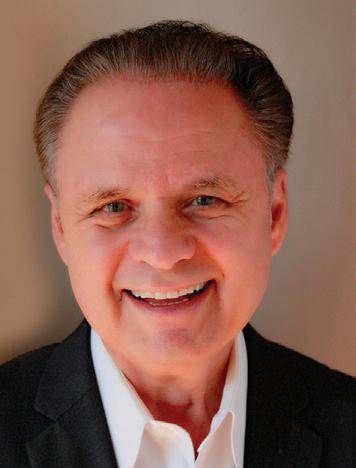


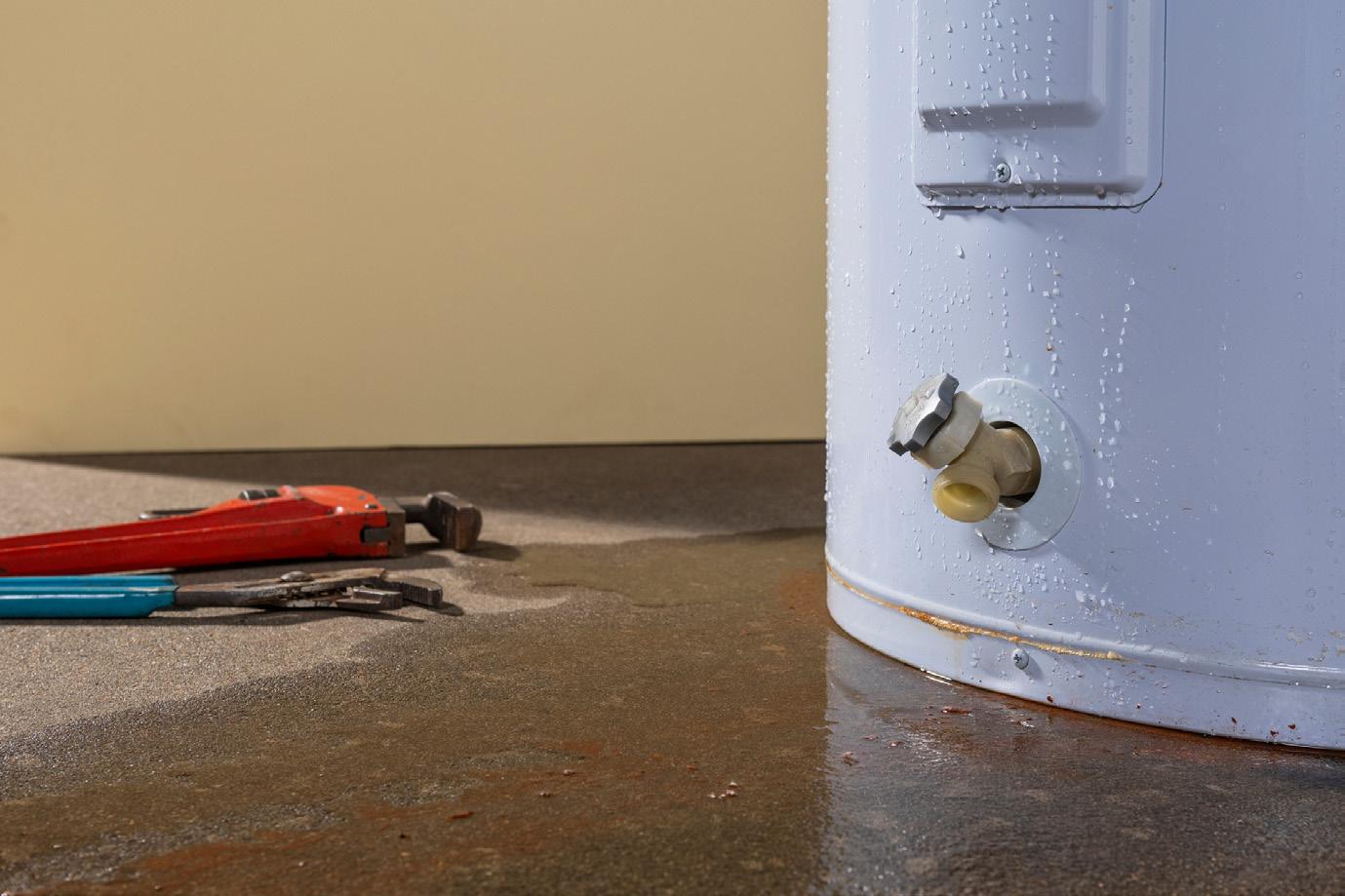


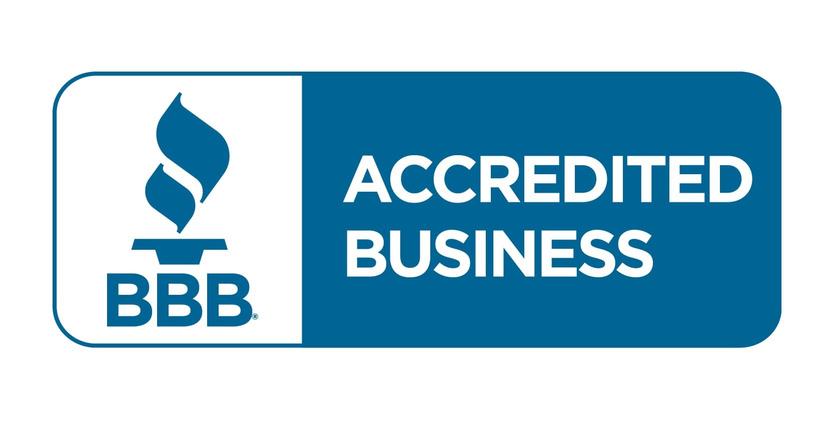

In today’s ever-connected digital age, it has become more important than ever for people to practice empathy. It can often be difficult to find empathy in one’s day-to-day interactions as technology has made communication increasingly impersonal. Though many rely on technology and encourage its use as a fairly quick and efficient means of communication, there are some out there who remember the importance of truly connecting with one another in order to honor empathy.
Empathy is defined as the capacity to understand or feel what another person is experiencing from within their frame of reference. To truly show empathy to one another, it’s important to acknowledge thoughts and feelings and respond with kindness and understanding. While empathy does not necessarily mean agreeing with another’s viewpoint, using empathy in interactions can be incredibly powerful.
It is important that our society derides empathy and look for ways to practice it. Not only is it increasingly advantageous for businesses to show empathy toward their customers and employees, but it is also important in our dayto-day interactions with loved ones. Empathy helps to create understanding, compassion,
and open communication between people and can help to increase trust in any relationship.
While technology and digital communication can be useful, it can be incredibly powerful for people to take the time to listen to one another’s perspectives. This helps to create a more meaningful exchange between people and can help to bridge the gaps between generations.
Though there are often cultural and generational differences in how we view and interact with each other, it’s important to remember that all humans share a common bond in our need for empathy. Empathy can help us to connect with one another in a deeper way and to foster more meaningful relationships.
No matter what one’s beliefs may be, taking the time to practice empathy can be incredibly beneficial for all involved. Learning to understand and appreciate other people’s feelings and beliefs can help to create more connected and compassionate relationships which are so important in today’s technological world.
Your days are filled with a constant stream of decisions. A study from Columbia University found that we’re bogged down by a good 70 decisions a day. Some decisions are minor, like what to eat, which route to drive to work, or in what order to tackle tasks. Others are more difficult, like deciding between two job offers, whether to move to a new city for someone you love, or whether to cut a toxic person out of your life.
With so many decisions taking up each day, learning to prioritize them and make them effectively is essential to your success and happiness.

Best-selling author
Dr. Bradberry is an awardwinning author whose bestselling books have sold more than 3 million copies in 150 countries. Dr. Bradberry has been covered by, Newsweek, Time, BusinessWeek, Fortune, Fast Company, USA Today, The Wall Street Journal, The Washington Post, and The Harvard Business Review.
His new book “Emotional Intelligence Habits” will be out at the end of Aug.

While I’m familiar with many strategies successful people use for effective decisionmaking, what follows are the cream of the crop.
Decision-making works like a muscle: as you use it over the course of the day, it gets too exhausted to function effectively. One of the best strategies successful people use to work around their decision fatigue is to eliminate smaller decisions by turning them into routines. Doing so frees up mental resources for more complex decisions.
Steve Jobs famously wore a black turtleneck to work every day. Mark Zuckerberg still dons a hoodie. Both men have stated that these iconic images are the simple result of daily routines intended to cut down on decision fatigue. They were both aware of our finite daily ability to make good decisions, as is Barack Obama, who said, “You’ll see I wear only gray or blue suits. I’m trying to pare down decisions. I don’t want to make decisions about what I’m eating or wearing, because I have too many other decisions to make.”
Another great way to beat decision fatigue is to save small decisions for after work (when decision fatigue is greatest) and to tackle complex decisions in the morning, when your mind is fresh. When you’re facing a stream of important decisions, a great trick is to wake up early and work on your most complicated tasks before you get hit with a bunch of distracting minor decisions (phones ringing, e-mails coming in). A similar strategy is to do some of the smaller things the night before to get a head start on the next day. For instance, lay out your outfit at night so you don’t even have to think about it when you wake up.
There’s an old saying: “Don’t make permanent decisions based on temporary emo-
tions,” and it definitely rings true. Successful people recognize and understand their emotions (including their intensity and impact on behavior) so that they are able to look at decisions as objectively and rationally as possible.
Unfortunately, most people aren’t good at managing or even recognizing their emotions. More than two million people have taken my emotional intelligence test and I’ve found that only 36% of us are able to accurately identify our emotions as they happen. Strong decision makers, on the other hand, know that a bad mood can make them lash out or stray from their moral compass just as easily as a good mood can make them overconfident and impulsive.
When really wrapped up in a decision, successful people weigh their options against a pre-determined set of criteria because they know that this makes decision-making easier and more effective. Here are some helpful criteria to consider: How does this decision benefit me? How does it hurt me? How does this benefit ___? How does it hurt ___? Does the decision reflect my values? Would I regret making this decision? Would I regret not making this decision? Does this decision reflect my values?
Sleeping on your decision ensures that you have clarity of thought when you approach it the next day. It also allows time for your emotions to run their course. When you act too quickly, you tend to react, but when you give more focus and time to your decision, you expose important facets of it that you didn’t see before.
Successful people know the importance of gathering as much information as they can, but at the same time, they make certain not to fall prey to analysis paralysis. Instead of waiting for the moons to align, successful people know that they need to have a timetable to follow in reaching their decision. Once they set that date, they are motivated to do their homework and some soul searching in order to meet the deadline.
The stress of a major decision naturally produces cortisol,
the chemical that triggers the fight-or-flight response. Cortisol clouds your ability to think clearly and rationally. When you find yourself stressing about a decision, try exercising. As little as 30 minutes is all it takes to get a good endorphinfueled buzz and to return to mental clarity. Exercise also helps you get past that fight-or-flight state by putting the cortisol to practical use. Research shows that long-term exercise improves the overall functioning of the brain regions responsible for decision-making.
Successful people know the importance of sticking to their morals when making an important decision. Morals serve as trusted guides when your emotions are pulling you in a different direction.
When approaching a decision, we have a natural tendency to pick an alternative and then to gather information to support that decision, instead of gathering information and then choosing a side (this is called confirmation bias). A great way to beat confirmation bias is to seek outside opinions and advice from people who bring different perspectives to your situation. Their perspectives help you weigh your options more objectively and to spot your subjective or irrational tendencies.
Mark Twain described the complicated nature of decisionmaking as follows: “Good decisions come from experience, but experience comes from making bad decisions.” This isn’t to say that the only way to become a great decision maker is to make a ton of mistakes; it just means that it’s important to keep past decisions front of mind. Successful people are aware enough of past decisions to use them to their benefit when something similar comes up.
With repercussions that can last days, weeks, and even years, making great decisions is an effort that’s worth every bit of your time and energy.
How do you make great decisions?
Q. How did you initially become involved in the multifamily industry?
A. I needed a discount on my apartment to save money for my upcoming wedding. So, I thought I’d apply for a leasing consultant job! After multiple job denials, someone finally took a chance on me! Shout out to Rose Stolo, current Area VP for AMLI Residential, at the time, she was a Sr. Community Manager, for AvalonBay, in Burbank, CA! I took the opportunity and never looked back!
Q. What have been the most rewarding aspects of your leadership role in the multifamily industry?
A. I’ve come to realize you don’t need a leadership title, to be a leader. Leaders come in all shapes and sizes, styles and personalities. But the most rewarding part of being a leader for me is seeing the impact I can make in people’s lives. Helping people reach goals they didn’t think were achievable. That is my favorite part of leadership.

Q. How has the multifamily industry changed since you began your career?
A. The biggest change I’ve seen is our industry’s willingness to embrace technology. Initially our industry seemed to be hesitant to embrace technological solutions, often relying on the “way it’s always been done.” Taking the philosophy “if it’s not broke – don’t fix it.” The Pandemic has thrust our industry into unchartered waters, and it’s exciting to help my company and the industry navigate the solutions of the future.
Q. What advice would you offer someone looking to enter the multifamily industry?
A. Learn every aspect of the business, as fast as you can. Learn the perspectives of residents, clients, suppliers, leaders, etc. It will help you have a broader more comprehensive view of how everything works together and will make you more valuable to your company.
Q. What do you believe are the key components of successful multifamily management?
A. Hire the best people. The best companies have the best people. To attract the best people, you must have the best systems and culture. To retain the best people, you must maintain the best systems and culture. Both are very difficult to do in a fluid economy, that’s why those are the most successful companies – they adapt to changing market conditions better than their competitors, while keeping the best people engaged and on-board.
Q. What have been the biggest challenges you have faced in your leadership roles?
A. The biggest challenges and greatest successes are always associated with people.
People are complicated. They embody emotions, expertise, baggage, hopes, dreams, and - good and bad habits. To get people (employees) all moving in the same direction, with a common goal in mind while minimizing performance flaws and internal bickering, is the biggest challenge of running or leading a business, by far. But when you’re able to do this, it’s the greatest achievement. That’s why it’s a goal worth striving for.
Q. What has been the most impactful decision you have made as a leader in the multifamily industry?
A. Not to leave this industry.
Q. What measures do you take to ensure your staff stays motivated?
A. Scheduled and unscheduled, check ins. And when you check in, really listen. Everyone is motivated differently, so to know how to motivate each person on your team, you’ll need to know each person on your team and what motivates them. Some are internally motivated; some are externally motivated. Some need motivation, some don’t. A good leader knows who’s on their team and how to speak and motivate each person at the right time.
Q. What do you believe are the key traits of an effective leader?
A. Passion, strength to communicate a vision, humility and empathy. All can co-exist in one person and be utilized in different scenarios to achieve different outcomes.
Q. Who inspires you?
A. Leaders facing incredible odds. Leaders who don’t give up when the chips are down. Leaders who believe in their vision, and work to see it come to life. A specific person I admire at the moment is hall-of-famer, Deion Sanders, current Head Football Coach of the Colorado Buffaloes (NCAA Football Team). He’s been called to lead and coach young men, to achieve incredible goals. He goes about his business differently – but he’s committed to his calling and his way of leading. That I admire.
In today’s fast-paced and constantly evolving world, it’s easy to overlook the importance of rest and how it can benefit your career. As leaders in the multifamily industry, it’s crucial that we prioritize taking breaks to recharge. I’m currently writing this from a serene lake in Minnesota where I’ve been spending time with my family. I’ve been pleasantly surprised by how this time away has led to a surge of creative ideas and innovative thoughts related to our industry. It’s not just my experience, though - studies have shown that when well-rested, we’re more productive, creative, and better equipped to make sound decisions. Additionally, we’re better able to empathize with and support our colleagues in their work and creative endeavors.
There are numerous advantages to making rest a priority for leaders. Below are a few examples:
Kneeland Vice President Strategic Partnerships at J Turner ResearchChelsea is a Multifamily Executive, Researcher, Public Speaker, National Facilitator and Instructor, Startup Multifamily Industry Advisor and a Certified Apartment Supplier

• Improved productivity: Being well-rested enhances productivity by allowing us to focus better and accomplish more tasks. It also decreases the chances of making errors.
• Improved creativity: Taking breaks and getting enough rest can improve our ability to think creatively and see issues from various angles and new perspectives.
• Better decision-making: Getting enough rest helps us think more clearly and make better decisions. It also reduces the chances of us acting impulsively or emotionally.
• Increased empathy: Taking time to rest can make us more empathetic and attentive towards others. By resting, we become better listeners and are more open to understanding different points of view.
• Reduced stress: Taking a break and getting some rest can go a long way in helping us handle stress and maintain a sense of calm in challenging situations. As a result, it can contribute to fostering a positive and content workplace for all individuals involved.
It’s not only leaders who require rest and leisure activities, but also our team members. When our team members are well-rested, they are more likely to be productive, engaged, and happy. Moreover, well-rested team members are less likely to commit errors and fall sick.
As a leader, it is crucial to promote rest and leisure among all team members. Here are some helpful tips to prioritize rest:
• To encourage your team to prioritize rest, lead by example. Take time for yourself to pursue leisure and rest and set boundaries to avoid working at all hours. It may be challenging if you’ve previously given your coworkers, team members, and leaders unlimited access, but it’s vital to prioritize your own well-being.
Chelsea• It’s important to promote breaks to your team members during the day to enhance their creativity and decisionmaking abilities. Suggest taking short breaks to walk around, step outside, or meditate. These activities can boost awareness, empathy, and the generation of fresh ideas.
• Consider offering flexible work arrangements to your team members, such as adjusting their hours or allowing them to work from home. This can improve work-life balance and increase employee satisfaction.
• To ensure a productive work environment, it’s crucial to prioritize rest. This can be achieved by offering comfortable workspaces, providing access to natural light, and encouraging short periods of relaxation throughout the day. By doing so, a healthy and successful work environment can be fostered.
Leaders and their teams need rest to deal with the ongoing staffing and satisfaction challenges in our industries. Adequate rest and leisure time can boost productivity, creativity, decision-making ability, and empathy, while also improving our stress management capabilities. By prioritizing rest, we can create a healthier and happier work environment for everyone, especially in a high-stress professional setting.
Here are some additional tips for leaders on how to encourage rest among their team members:
• Talk to your team about the importance of rest. Explain the benefits of rest and how it can help them to be more productive and engaged at work.
• Set clear expectations about work hours and deadlines. Make sure your team members know when they’re expected to be working and when they can take breaks.
• Be flexible with work hours and deadlines. If your team members need to take a day off or work from home, be accommodating if possible.
• Create a culture of trust and respect. When your team members feel trusted and respected, they’re more likely to feel comfortable taking breaks and asking for help when they need it.
• Model healthy work habits. If you want your team members to rest, you need to make sure you’re taking time for yourself too. This means setting boundaries rather than constantly working without rest.
Multifamily leaders can promote a healthy work-life balance for their teams by implementing these helpful tips that encourage rest and relaxation in the workplace.


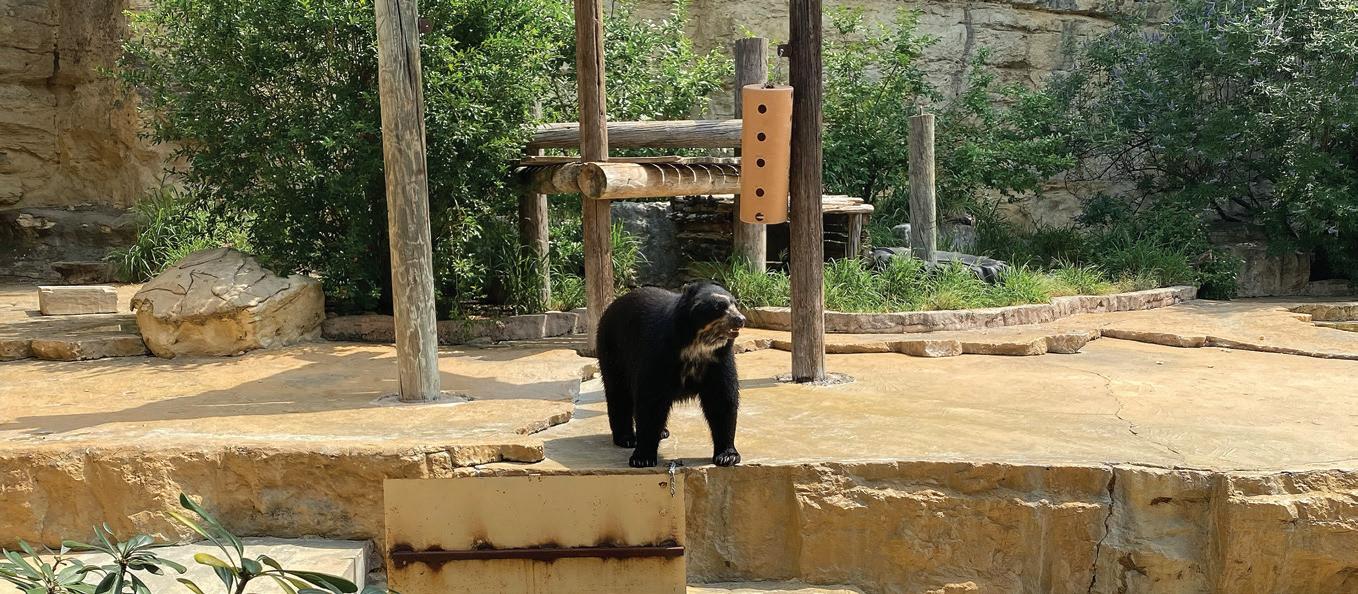



The SA Zoo is home to over 3,500 animals from 750 species. It is one of the largest zoos in the country & has been named BEST ZOO IN TEXAS for the 4th time in 5 years by 3 organizations!
1 2 3 4
SA is one of the most haunted cities in the US, with many ghost stories and haunted buildings. Some of the most famous haunted places include the Menger Hotel and the Emily Morgan Hotel.
San Antonio is home to the largest mariachi music festival in the world, the Mariachi Vargas Extravaganza. It takes place every November and features performances by over 1,000 musicians.
The Tower of the Americas in San Antonio is a 750-foot observation tower that offers panoramic views of the city. It was built for the 1968 World’s Fair and is now a popular tourist attraction.

832-978-3935
Brent Williams works and plays in the apartment industry through Multifamily Insiders, the largest online social networking group for apartment professionals. Multifamily Insiders hosts blogs and discussions on a variety of topics, such as apartment marketing, apartment maintenance, resident retention, property management, apartment investment, multifamily development, and apartment jobs.
TThe multifamily industry has long been a very generous and caring space, so if you have been active for any length of time, you can probably pick up the phone and find help in a variety of ways. On the flip side, I bet most of you reading here today have taken the time to help countless others. That said, sometimes helping the community is more than being reactive – it is proactively taking time to pass along your wisdom and experience to others. This could take a variety of approaches, from offering to be a speaker at your local apartment association to writing articles in publications like this or on places like Multifamily Insiders.
I have had countless conversations with people in this vein, where they want to take the time to speak, write, or maybe create a podcast, but all too often something comes up and they lose whatever momentum they had. And let’s be real – no matter how strong the motivation to help our fellow multifamily professionals, we all have busy jobs!
So today, I’d like to highlight something that most people don’t realize, that sharing your expertise is actually a form of self improvement. I know that sounds odd, because we are literally talking about sharing knowledge not intaking knowledge, but this process actually has a secret benefit of enhancing your own professional skills. Beyond the simple act of improving your writing or speaking capabilities, becoming a thought leader, no matter how large or small the scale, forces you to sharpen your comprehension, to reflect on your own understanding of that topic and take it to a more deep and powerful level of understanding.
Let’s jump in the way-back machine to 2009 where I was asked to speak at the AIM conference on the budding topic of Twitter. You
see, at the time it was really only myself and a handful of early multifamily adopters who were active on Twitter, so I was tasked with explaining how to leverage this brand new world for multifamily professionals. At this point I had quite a bit of experience with the platform and a variety of related services that helped me get the most out of my efforts there, but there was no way I could simply riff on the subject of Twitter for an hour with the audience gaining anything at all of value. Instead, I had to reflect on what I already knew, put it down on paper (figuratively), and then realize that I had some major gaps even then. I researched how other power users were using Twitter, what other tools were available, and any features or functionality that I simply hadn’t looked at. By going through this process of teaching the topic of Twitter, I became much more adept at the topic myself.
In this way, even though I hope I added value to each attendee there that day, the reality is that I probably helped myself just as much as I did them. The process was a directed self improvement program that had tangible benefits on my skill set.

So the question isn’t whether you have time in your busy career to help others, although that is definitely a worthy and noble approach, the question is also whether you are taking the time to build your own skills. While many of you likely sign up for classes and education sessions, which is also a phenomenal way to accelerate your career, also consider how taking a thought leadership role in terms of sharing your experience can help you take your next steps in multifamily.
Please feel free to reach out to me directly, as we are always looking to put a spotlight on great voices in multifamily! You can reach me at brent@multifamilyinsiders. com or at http://www.multifamilyinsiders.com

Reading is an essential part of continuing education. It is an activity that can help us expand our knowledge, improve our skills, and keep us up-to-date with the latest trends and developments in our fields of interest. In this article, we will discuss the importance of reading for continuing education and how it can contribute to our personal and professional growth.
Reading is one of the best ways to enhance our knowledge. It exposes us to different perspectives, ideas, and opinions that we may not have encountered otherwise. For instance, reading books, articles, and magazines related to our field of work can help us gain a deeper understanding of the subject matter, learn about new concepts and theories, and stay informed about the latest trends and best practices.
Reading can also help improve our critical thinking skills. When we read, we are exposed to different viewpoints, arguments, and evidence. This helps us develop our analytical and reasoning skills as we evaluate and assess the information presented. As a result, we become better at making informed decisions, solving problems, and identifying opportunities.
Reading can also help enhance our communication skills. When we read books, articles, and other written materials, we are exposed to different writing styles, vocabularies, and sentence structures. This can help us improve our writing skills and become better at expressing ourselves clearly and effectively.
Reading is a lifelong activity that can help us continue learning and growing. It allows us to explore new topics, learn new skills, and gain new perspectives. By reading regularly, we can stay curious, open-minded, and eager to learn. This can help us adapt to changing circumstances, stay relevant, and continue to grow both personally and professionally.
Reading is an essential part of continuing education. It helps us enhance our knowledge, improve our critical thinking and communication skills, and promote lifelong learning. By making reading a regular habit, we can stay informed, engaged, and curious about the world around us. So, pick up another book, an article, or magazine today and start reading.
And thanks for reading this magazine!

1. Utilize hashtags: Utilize relevant hashtags on your posts to attract people who are interested in your property or company.
2. Engage with your audience: Reply to comments and messages, ask questions and create content that encourages conversation.
3. Post consistently: Develop an editorial calendar for your social media and stick to your posting schedule.
4. Run a contest: Host a giveaway or contest that requires followers to like, comment or share your post to enter.
5. Collaborate with influencers: Tap into an audience of local social media influencers by partnering with them and sharing their content.
6. Create visually appealing content: Use highquality images, videos, and graphics to capture attention and stand out in feeds.
7. Invest in paid advertising: Use paid advertising on social media platforms to target your ideal audience and gain followers.
8. Cross-promote: Share your social media handles on your website and on other social platforms to drive traffic and gain followers.
9. Monitor analytics: Use analytics to track and analyze your social media performance, and adjust your strategy as needed.
10. Offer exclusive content: Share behind-the-scenes content, exclusive videos or access to special events to encourage people to follow your brand.
Here are some fun party themes and ideas for your next resident get-together!
Game Night: Host a game night with board games, card games, and party games like charades and Pictionary. Provide snacks and drinks to keep everyone fueled up.
Outdoor Movie Night: Set up a projector and screen in a common outdoor area and show a popular movie. Provide popcorn and drinks for a true movie theater experience.

Pool Party: If your apartment community has a pool, host a pool party with pool games, music, and snacks like fruit skewers and ice cream.
Luau: Host a luau-themed party with tropical decorations, Hawaiian shirts, and fruity cocktails. Provide leis and grass skirts for a fun photo opportunity.
Karaoke Night: Set up a karaoke machine and let residents show off their singing skills. Provide snacks and drinks to keep the energy up.
Sports Night: Host a sports-themed party with games like cornhole, ping pong, and foosball. Provide snacks and drinks and prizes.
DIY Craft Night: Host a DIY craft night where residents can make their own crafts like painting, jewelry-making, or knitting. Provide all the supplies and snacks to keep everyone creative.
Wine and Cheese Night: Host a wine and cheese night with a selection of cheeses and wines for residents to taste. Provide crackers and other snacks to complement the flavors.
Scavenger Hunt: Host a scavenger hunt around the apartment community with clues and prizes for the winners. Provide snacks and drinks at the end of the hunt.
Holiday Party: Host a holiday-themed party for Halloween, Christmas, or any other holiday. Provide decorations and snacks that fit the theme.
These are just a few ideas to get started. You can customize any party theme to fit your community and residents’ interests.

How do you strike up a conversation and engage someone in meaningful dialogue? The art of conversation is something that many of us struggle with, if not in our personal relationships then in more professional avenues such as networking events or job interviews.
Being able to easily engage with others in meaningful dialogue is a skill that many of us strive to master. Here are some tips to help you strike up conversation and get comfortable talking to people:
1. Be Yourself: One of the most important lessons when engaging in conversation is to simply be yourself. Don’t try to be somebody you’re not and be comfortable with who you are. People will be more likely to connect with you if they know you are being honest and genuine.
2. Do Your Research: Before diving into an in-depth conversation, it’s always helpful to do a bit of research on the person you will be conversing with. This can help you identify areas of dialogue that may be interesting to that person, as well as give you the opportunity to ask meaningful questions.
3. Facilitate Open-Ended Questions: Asking questions that allow for more than a yes or no answer encourages conversation to flow more easily and gives the other person the opportunity to dive deeper into what they are saying. Try to avoid questions that give the other person the opportunity to only offer brief responses.
4. Listen Closely: Listening is equally as important as speaking in a conversation. Be sure to give the other person your full attention and be engaged with what they are saying, as people tend to appreciate when you make them feel heard.
5. Break the Ice: If you are uncertain of how to start the conversation, break the ice by sharing something personal, such as a funny story or an anecdote. This will help ease any awkwardness and put you both at ease.
By following these tips, you can become a much more confident and effective conversationalist with any crowd. Mastering the art of conversation takes time and practice, but you can become a top-level conversationalist with a little practice
If you are experiencing a problem with stray/feral cats, San Antonio Feral Cat Coalition is available to assist you with resources and effective solutions to help reduce the overpopulation of cats. We can also teach you how to get them spayed/neutered, with our online training class!


We are an all volunteer non-profit organization that has helped San Antonio Trap-Neuter-Return community cats since 2004! We are a 501(c)(3) Nonprofit Corporation that depends entirely on donations to sustain our operations.
In 2022 alone we:
Educated 1,033 people to do TNR through our FREE online course
Loaned out 1,150 traps and sold 123 traps
Helped the public spay/neuter 5,514 cats
Placed 1,500 adoptable cats into loving homes
Our vision is to have a community where no kittens are born wild on the street, no cat capable of living in a home is lacking one, and no feral cats are wanting for food, water, and appropriate care and concern. HELP support out mission and end needless suffering!
TNR, or Trap-Neuter-Return, is the most effective and humane method of controlling outside cat populations. With TNR, cats are trapped, spayed or neutered, vaccinated against rabies and ear-tipped for identification.
TNR is about:
• reducing and controlling the cat population
• lowering cat intake into shelters
• reducing disease
• Most importantly, the breeding stops. The goal is kitten-free complexes, not necessarily cat-free complexes. Families will no longer see kittens run over in the parking lot. Numbers will stabilize and start to decline.

YOU are the solution! Every individual who steps up and helps spay or neuter just one cat, makes that one cat's life 100% better. Additionally, the impact on the neighborhood and environment is a huge contribution to the solution. It's not someone else's job. YOU can make the difference.Become part of the solution and visit our website at sanantonioferalcats.org to get started today. Prefer phone calls? No problem! Our Helpline can be reached at 210-877-9067. Calls with voicemails are returned within 24 hours.
Based on the best combination of rental rate growth and absorption over the past 3 months. There are a total of 15 submarkets in the San Antonio area.
Concessions are generally represented by three types of specials: move-in, months free, or floorplan. These specials are prorated over a lease term to arrive at a percentage reduction in market or street rents.
Statistics derived from a continuous survey of all apartment communities. Effective rental prices are calculated net of concessions and utility adjustments.
MRI ApartmentData provides real time access for property specific information, market surveys and historic submarket data for over 3.5 million apartment units in AZ, FL, GA, NC, TN, and TX.

